Buying Guide: peeled canned tomatoes
The tomato is the most widely grown vegetable in Italy, and now one of the main symbols of Italian gastronomy. The need to use it at any time of the year has led to the emergence and development of the industry of canned tomatoes. No need to be a chef to know that for a tomato based recipe you can not use any kind of preserve. Each tomato derivative has precise characteristics of taste, texture, creaminess and coloring strength making it suitable to specific culinary purposes.
Peeled tomatoes, along with pulp, are the preserves preferable in the preparation of the classic tomato sauce, if you do not have available fresh and ripe tomatoes. The peeled can also be used in the preparation of the pizza, though, for its convenience, many pizza makers prefer the puree. To achieve good results in the kitchen is essential, however, that the tomatoes are of the highest quality. Here is a card which can be useful to evaluate the quality level of these products.
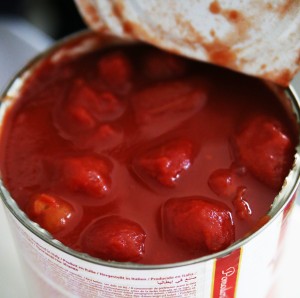
Quality is …
The quality of the peeled tomatoes depends on a number of different factors: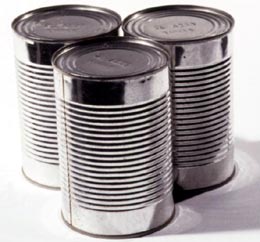
– The starting characteristics of the tomatoes that are used,
– The correctness of the processing,
– The quality of any additions (of salt, tomato juice, basil leaves, for example),
– Hygiene during their production,
– The conditions and the type of packaging chosen for peeled.
Obviously, it is important also the perfect product match with the particulars declared on the label; In this regard, it should be noted that a complete and correct label is the first card of the good quality product. You should always check:
– The clear presence of all the information required by law,
– The absence of written which can lead to confusion with respect to content. Remember that the tomatoes with the words “higher” contain more pulp, other particulars (extra, natural, tasty) have no legal meaning,
– The position of the expiry date of the product and its readability.
The organoleptic characteristics
As for the majority of food products, the first quality judgment passes even for peeled, through sensory analysis. Here are the basic elements that must be considered during the tasting:
Color
The good-quality canned tomatoes are a beautiful red uniform bright color, without the green parts, yellowish or sick. Most tomatoes are red, in fact, and definitely better is their degree of maturation.
Smell and taste
They must be characteristic and harmonic (neither too sweet nor acid), free of bitterness, nor cooked.
Consistency
The tomatoes must be firm, uniform in size; They must also retain as much as possible the characteristic shape of the fresh fruit.
Presence of peels
In good quality peeled, the presence of the skins must be very low. Their absence, in fact, is an index of the efficiency of the machining process (scalding and peeling). The law allows a maximum of 3 cmq of skin to 100 g of product, calculated on an average of at least 5 containers; in any case, on a single box the amount of the skins, always for 100 g of drained product, must be less than 12 cm².
In this aspect, it may be found significant differences between different brands.
The direct control of the presence of the skins is quite simple: the skins, from a weighed amount of peeled, are removed, layed over, next to one another, on a glass plate, so as to form a single figure, as much as possible regular; overlaps with another glass plate and with a transparent sheet of paper (possibly millimetric) is detected the outline of the figure. It is not hard, so, to calculate the surface and then relate it to 100 g of product.
The hygienic conditions and packaging characteristics
The containers used for the production of peeled arrive up to a size of 5 kg, although generally in the professional catering is marketing the 3 kg boxes. The materials used in the packaging of peeled tomatoes are tinplate and the glass (in the form of vessels). For tinplate there should be no dents, bulges, rust, internal corrosion. Although ingestion of tin is not considered a health hazard, the law shall determine specific concentration limits for processed tomatoes (195 mg / kg), because the presence of this metal in greater quantities indicates a poor quality tinplate used for the container, and also a high degree of acidity due to the poor preservation of tomatoes during processing. If, instead, of peeled packed in glass containers, it is necessary to observe the correct filling (no air bubbles) and make sure that closing will resist when you open the package.
Product conditions
The alterations may be suffered peeled mainly concern the possible presence of mold. This may be caused by lack of hygiene during the processing or also by the deterioration of the containers during storage. The law does not oblige to indicate the date of packaging of peeled and the two-year retention period, that manufacturers consider to fix the expiry date, it should be considered realistically too long. More reasonably, you can consider a product lifetime in optimum conditions equal to 6-9 months.
Additives
Apart from the addition of partially concentrated tomato juice, the law allows you to also add salt, provided it does not exceed 20% of dry extract.
Other canned tomatoes
Concentrates (paste)
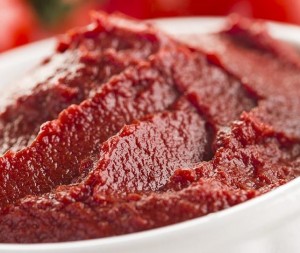
The concentrates, along with peeled, are tomato derivatives more “dated” and have virtually dominated the domestic market since the war. In the last decade they have suffered a slow but inexorable decline, leaving space to new products such as, for example, pulp and puree. The tomato concentrates are used in the catering industry when you need to “give color” in preparations such as soups or sauces. If you decide to buy the tomato paste, it is always good to remember that a good product should appear shiny, no grit, with a homogeneous mixture free from fragments of leaves, stems or skins. The color of the concentrates must be of a bright red, dark, while the flavor, albeit with slightly cooked flavor, must not be, definitely, too salty or with a bitter aftertaste.
Pulp, tomato chunks and puree
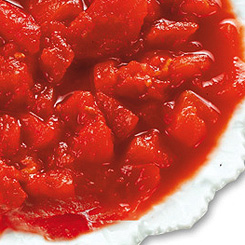
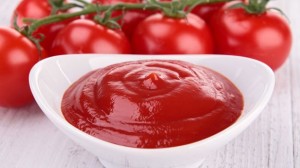
They are the tomato derivatives of the new generation, and they quickly found favor with the public. Unfortunately, there is still no legislation that defines the characteristics of these products; for which, at the time of the opening the pulp vessels, it shall be established that the sauce is not prevalent on the pulp. Color, red, must be rather homogeneous, with no obvious unripe parts or presence of dark fragments. The seeds and the peels minimized. The tomato cubes must have fairly uniform size and same consistency. Puree, finally, must have good characteristics of “fullness”, high homogeneity (no lumps and extraneous parts) and absence of seeds and skins. The best puree have bright red color, not too dark, and flavor of fresh, not cooked flavor.





Leave a comment